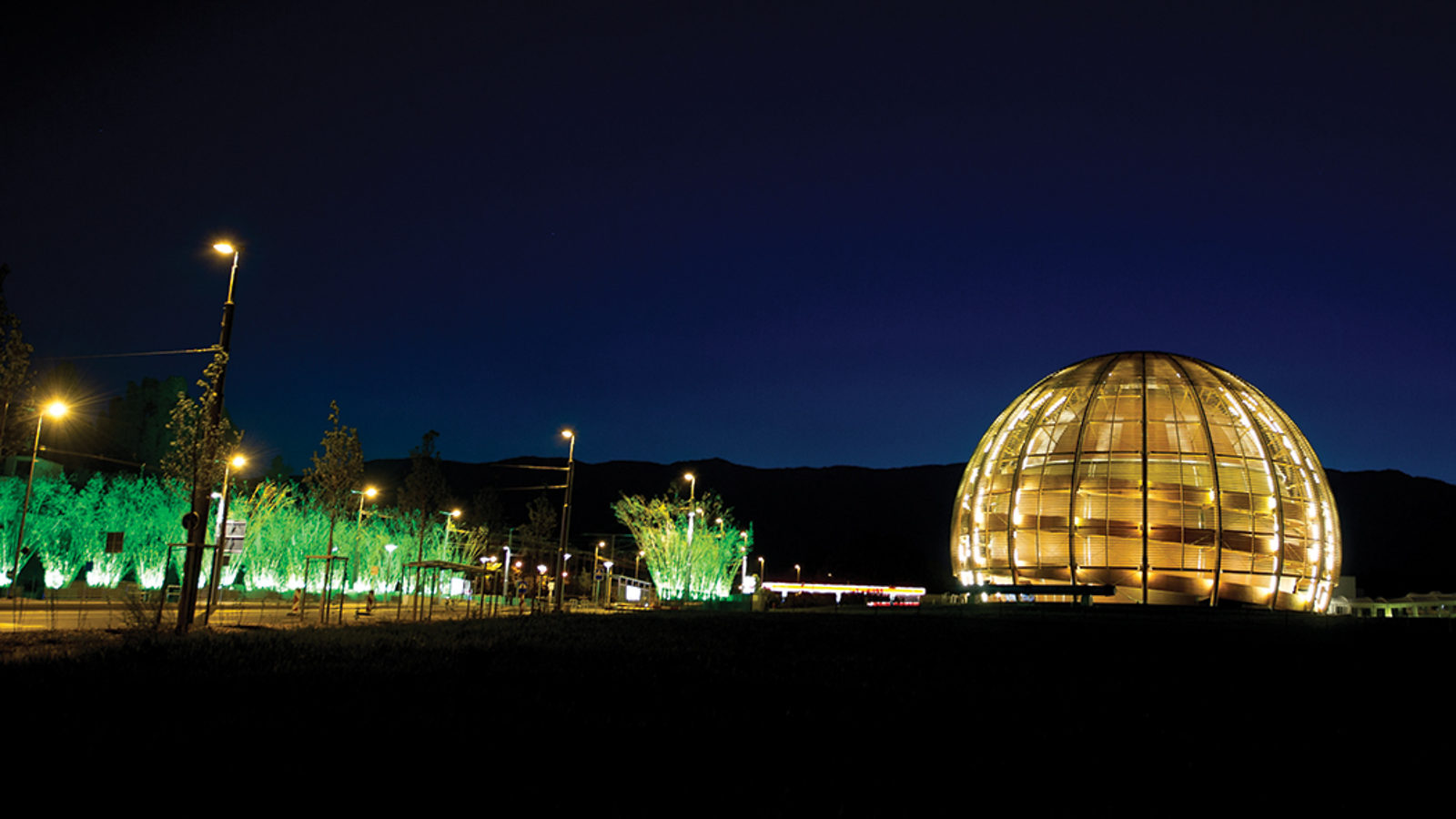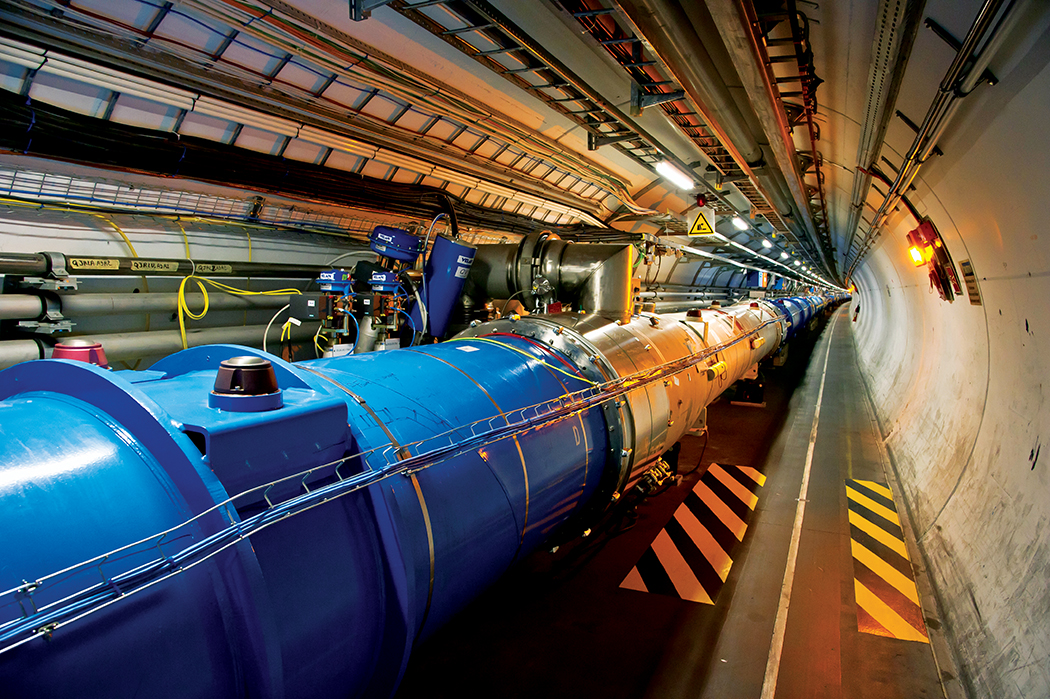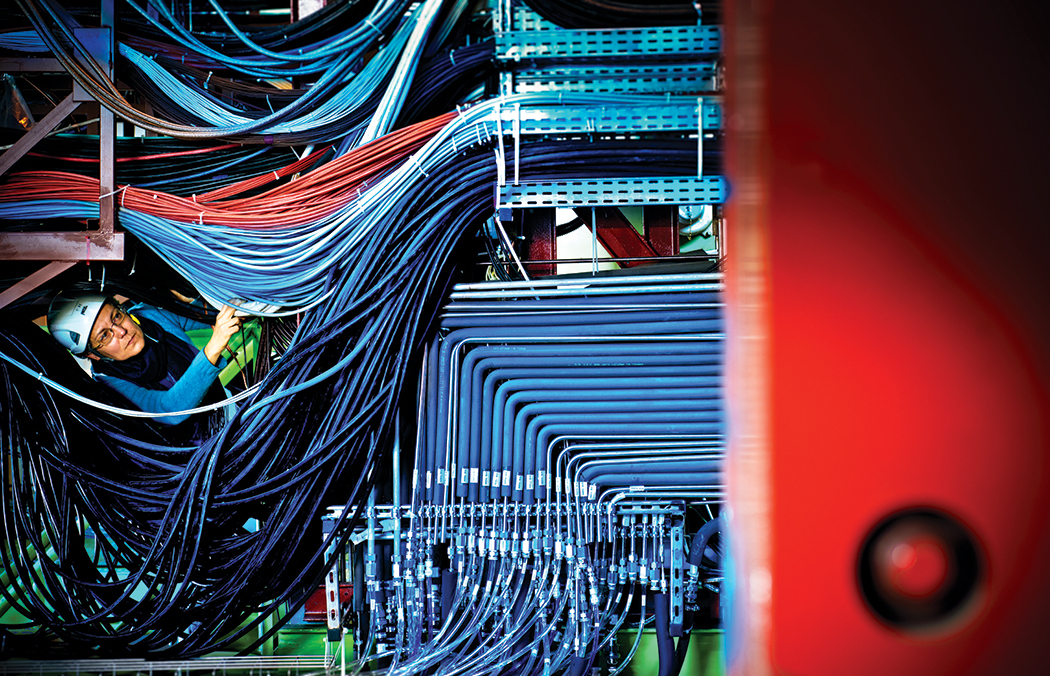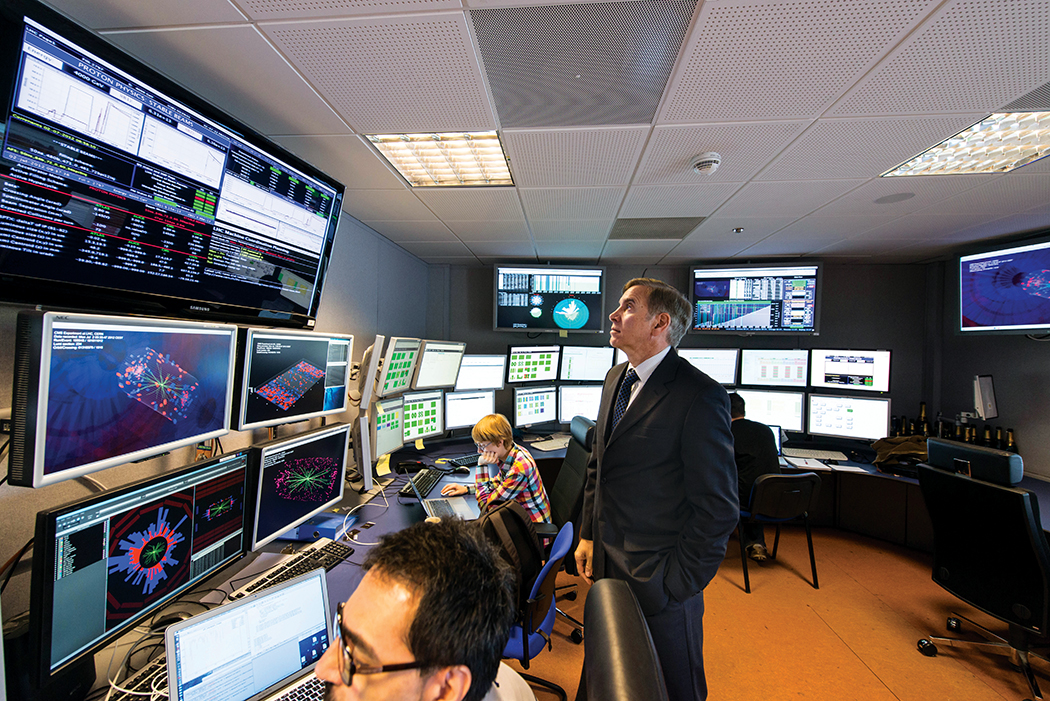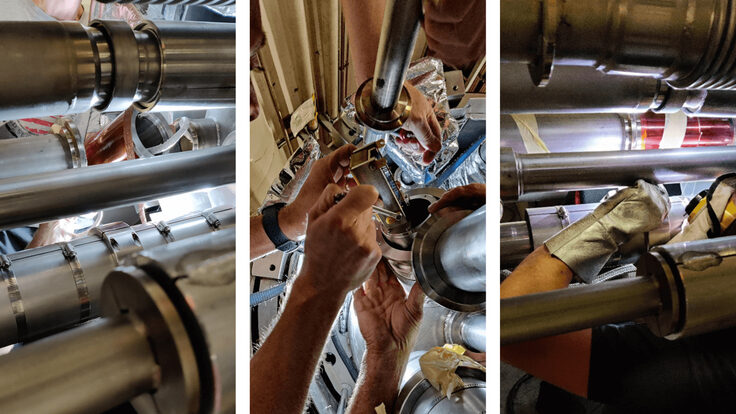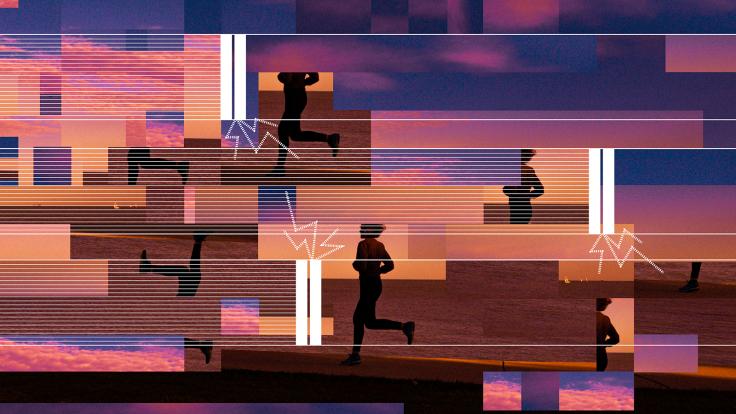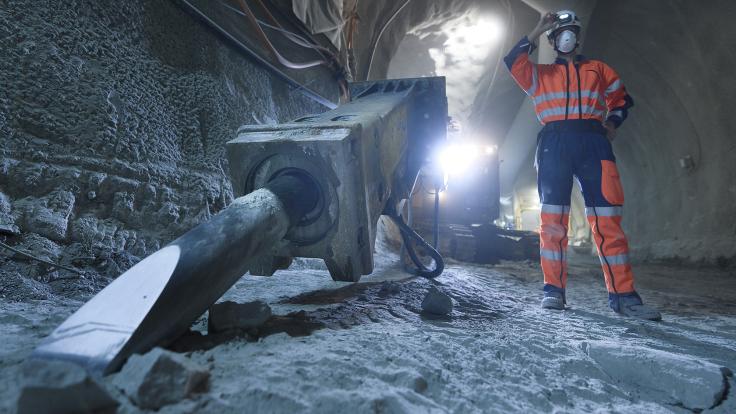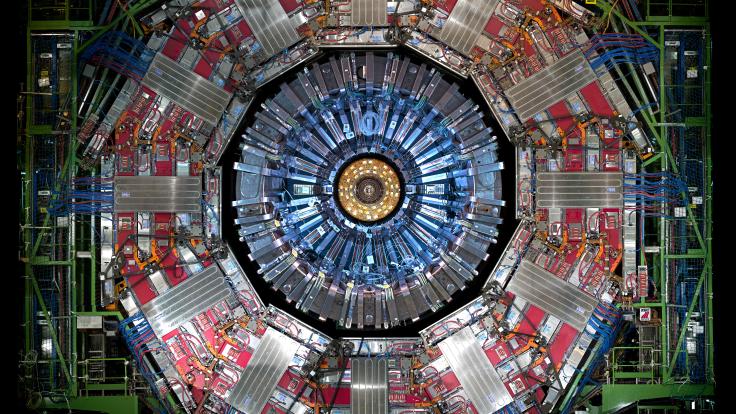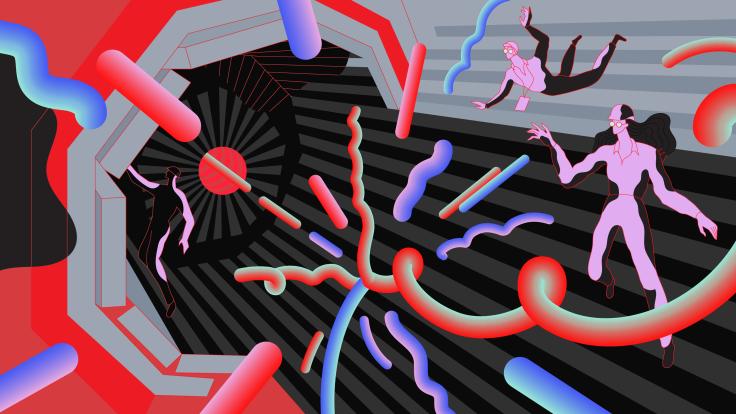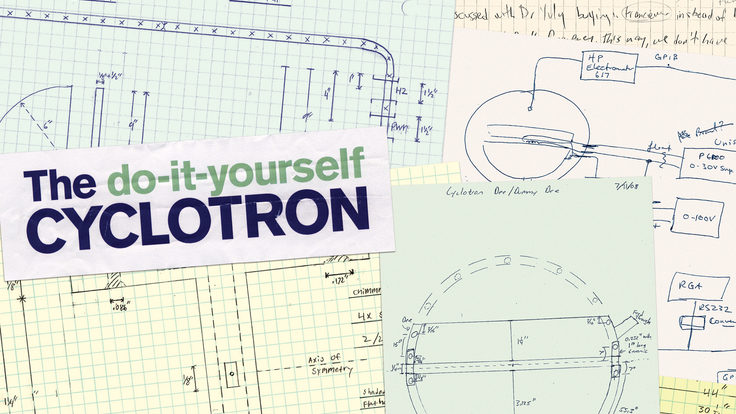The Large Hadron Collider, the largest particle accelerator in the world, started colliding particles more than three years ago. Since then, scientists have published more than 700 papers detailing the knowledge they have gained at the cutting edge of particle physics.
Undisputedly, the most famous insight so far has been the discovery of what could be the long-sought Higgs boson. This particle is thought to arise from the fluctuation of the invisible “Higgs field” that pervades the universe, imparting mass to particles that interact with it. Without the Higgs field, our world would be a much different place.
Even during the excitement of that discovery, thousands of scientists—more than 1800 of whom are based in the United States—continued the important work of analyzing the continuing flood of new data pouring out of their detectors.
There is still much to learn about the new, Higgs-like particle. And there is still much more territory to cover in the search for new physics. The LHC will expand its reach dramatically when scientists crank its energy from 4 trillion to 6.5 trillion electronvolts in 2015.
Beyond discovery
In the LHC, superconducting magnets steer two beams of protons in opposite directions along a 17-mile ring more than 300 feet beneath the border of Switzerland and France. The beams cross paths in four locations along the ring. When a proton from one beam collides with a proton from the other, the energy of the collision can convert into mass, creating for a moment new particles.
Massive particles created in collisions are unstable and quickly decay into less massive particles, leaving a whole zoo of particles for scientists to study.
Since the LHC turned on, the ATLAS, CMS, LHCb and ALICE experiments—along with the smaller experiments TOTEM and LHCf—have discovered a total of three particles.
“At the LHC, the streetlamps are just beginning to turn on, and we can see under some of the lampposts now,” says John Ellis, a theorist and professor at King’s College London. “Eventually, the pools of light will join up and we’ll be able to see everything.”
In December 2011, one of the lamps revealed something new. The ATLAS collaboration announced the first particle discovery at the LHC—a quark and antiquark bound together named Chi-b(3P) (pronounced kye-bee-three-pee). Although it had been predicted for years, it took the high rate of collisions in the LHC to finally expose the particle. Scientists are still studying it to understand how the quark and antiquark tie together through the strong nuclear force, which makes the nucleus of an atom stick together, too.
The CMS collaboration found the limelight just a few months later, in May 2012, when they announced the discovery of the excited baryon Xi(b)* (pronounced sai-bee), a particle composed of three quarks, including a bottom quark. Scientists are now analyzing the particle; their work may reveal insight into how quarks bind together.
And then, in July 2012, both the CMS and ATLAS collaborations announced the discovery of a new particle that could be the Higgs boson.
Searching for new particles is just one continuing function of the LHC experiments. Now that scientists have uncovered new particles, they have another focus—finding out more about them.
The new Higgs-like particle, for example, seems to fulfill at least the minimum role of the Higgs boson, as it interacts with particles in more or less the expected way. But observations of the new particle’s properties—its spin, parity and detailed interactions—could show it to be a different kind of Higgs than the one predicted by the Standard Model, the theory used to explain the makeup and interaction of particles and forces in our universe.
If it turns out that the particle is not the Standard Model Higgs boson, scientists will learn that there are new phenomena whose descriptions may require new underlying principles. One popular alternative model under investigation is called supersymmetry. It posits that each particle of the Standard Model has a related, more massive partner particle. In this model and others, there would be more than one Higgs boson. Alternatively, it could be that the Higgs boson is made of other, even smaller particles. Or it could be that the Higgs exists in more than our three dimensions of space.
“We could be looking at a new framework,” says Joao Varela, a physicist with the Portuguese institute LIP and CMS deputy spokesperson. “It may not be the Standard Model or even supersymmetry. It might be something else entirely.”
Conversely, if the Higgs turns out to be the particle scientists expected to find, physicists will have finally discovered every piece predicted in the Standard Model.
More than new particles
Yet even with a Standard Model Higgs, questions will remain in particle physics theory.
Particle physics research encompasses three intertwining frontiers: the energy frontier, the intensity frontier and the cosmic frontier. Energy frontier experiments involve converting energy into mass at particle colliders such as the LHC; intensity frontier experiments use intense beams of particles to study rare processes and make high-precision measurements; cosmic frontier experiments use the cosmos as a laboratory and also study particles that reach Earth from distant sources.
Work at all three frontiers aims in part to resolve a major contradiction in particle physics theory. The masses of force-carrying particles such as the Higgs boson, the W boson and the Z boson are all relatively similar, between 80 and 125 times the mass of the proton. Within the Standard Model, there is no explanation for why the masses of these particles—each associated with a force that governs interactions between particles—should have these values, nor why the Higgs mass should be so similar to the other two. In fact, theorists have argued that these values are “unnatural” in the Standard Model, and that the findings beg for an explanation.
Theorists have proposed many new models that can account for these strangely low masses. All of these new models require the addition of new fundamental particles to the Standard Model. Conveniently, some of the extra particles predicted are good candidates to fill the role of dark matter, the matter that scientists have found indirect evidence for in cosmic frontier experiments but have never observed directly.
So far, LHC experiments have not found these extra fundamental particles. (The two new particles found thus far, other than the Higgs-like boson, are composite, not fundamental.) But even if they did, there would be another hitch: Adding particles to fix the problems of the inexplicably light Higgs and invisible dark matter causes a different kind of trouble. The contradiction appears in something called flavor physics.
Some particles come in multiple copies with different masses. These iterations are called flavors. Neutrinos, rarely interacting particles that are a favorite subject of intensity frontier experiments, come in three flavors. Likewise, there are three types of electrically charged leptons: the electron, muon and tau. Quarks, the particles that make up atomic nuclei, come in different types as well: up, down, charm, strange, bottom and top.
Sometimes a particle will transform from one flavor to the next. Based on the Standard Model, scientists can predict how often this should happen, if at all.
Scientists’ current predictions are calculated based on the Standard Model. But if there’s something beyond that model, one or more undiscovered particles, scientists expect to find that their Standard Model predictions for flavor mixing do not precisely match their experimental results.
So far, that has not been the case. Measurements of flavor mixing at intensity frontier experiments and energy frontier experiments—including LHCb, CMS and ATLAS—have conformed nicely with standard predictions.
“It’s the tension between the frontiers that’s really exciting,” says Andrew Cohen, a theorist at Boston University. “We’re investigating this fundamental mystery of the energy scale of the W, Z and Higgs bosons on all three fronts.”
Results from the LHC experiments will continue to provide essential contributions toward resolving this conflict. Studying the properties of the new, Higgs-like particle and conducting direct searches for new particles will be the tasks of the ATLAS and CMS experiments. Flavor physics and indirect searches for new particles are more the specialty of LHCb. In their own ways, CMS, ATLAS and LHCb are all working to make more and more precise measurements to more rigorously test the Standard Model.
The ALICE experiment has a slightly different specialty: delving into understanding the behavior of the early universe. ALICE was designed to study collisions of heavy ions, which produce a very hot state of matter called the quark-gluon plasma. Scientists think the universe began in this state, a primordial soup from which everything around us grew. ALICE results, like those from the other LHC experiments, may have an important impact on all three frontiers of particle physics.
More to come
Starting in March 2013, the LHC’s long shutdown will give scientists, engineers and technicians the opportunity to upgrade the machine to run close to its design energy. Each beam will operate at 6.5 trillion electronvolts.
Scientists expect to collect data from more than 200 quadrillion particle collisions after the machine switches back on in 2015. At higher energies, they will be able to see even more interesting events.
“The same amount of data at a higher energy is worth more,” says Ian Hinchliffe, a physicist with Lawrence Berkeley National Laboratory and member of the ATLAS collaboration. “With the planned upgrades, we’ll increase the LHC’s sensitivity by a factor of 10.”
Albert Einstein’s famous theory of relativity states that the energy of a particle is related to its mass; the two are different sides of the same coin. The LHC puts the theory to work, pumping up particles to high energies and smashing them into one another in order to transform that energy into mass in the form of new particles.
Collisions at higher energies can create particles with more mass. At 13 trillion electronvolts, the LHC will be able to access a new realm of masses and states of matter never before seen in manmade accelerators.
“The increase of energy gives a much greater reach, particularly for heavy objects with a higher mass,” says Andy Lankford, a physicist with the University of California, Irvine, and deputy spokesperson for ATLAS. “It gives us the ability to explore the unknown.”
A high-energy future
Exploration at the LHC has only just begun.
“There are many reasons to be excited for the next five to 10 years and beyond,” says Joe Incandela, a physicist with the University of California, Santa Barbara, and CMS spokesperson.
Through careful studies, scientists will determine the properties of the new, Higgs-like particle. They will find out whether the Standard Model is a done deal or whether it has steered them astray. And they’ll have the opportunity to find the unexpected.
Nature certainly has more mysteries for scientists to explore, and once the accelerator begins running near full capacity in 2015, researchers will have even better tools to search for new physics.
“We are at the beginning,” says Aleandro Nisati, who leads the ATLAS collaboration’s studies of how the LHC upgrades will expand the potential of physics analyses. “This is a new, big chapter in high-energy physics.”



